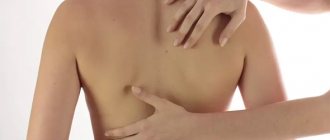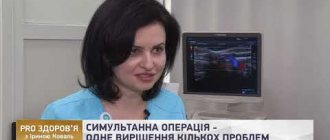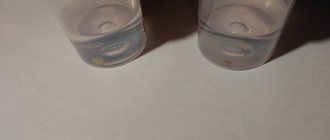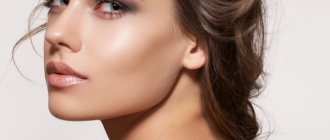Shingles or herpes is an infectious disease that causes damage to the skin with the appearance of characteristic rashes. The causative agent of the infection is the varicella zoster virus, which is in a latent state in the patient’s body.
After a person has had chickenpox, the virus becomes inactive and can persist in the cells of the spinal cord for decades. Its reactivation against the background of decreased immunity leads to the appearance of symptoms of herpes zoster.
What is shingles?
Shingles is a common viral disease diagnosed in people who have previously had chickenpox (chickenpox). The infection occurs more often in older people, which is associated with an age-related decrease in immune defense.
The development of shingles can be triggered by:
- uncontrolled medication use;
- radio and chemotherapy;
- hypovitaminosis;
- intense physical or mental stress;
- unfavorable environmental situation;
- prolonged exposure to allergens or toxic substances (for example, at work);
- a sharp change in climate zone;
- hypothermia of the body;
- chronic diseases, for example, diabetes, stomach ulcers;
- undergone surgical operations.
The risk of developing herpes zoster is higher among people suffering from autoimmune diseases and cancer.
The symptoms of the disease depend on its stage and the individual characteristics of the patient’s body. The incubation period can last decades, after which the virus is activated against the background of previous injuries, acute infections or other factors that weaken the immune system.
In a latent state, the pathogen is located in the spinal cord, but when the body’s defenses decrease, it begins to actively multiply and infect surrounding tissues. As a rule, the virus “moves” along the nerve endings to the skin, where it manifests itself in the form of a characteristic rash. At the same time, the infection spreads throughout the nervous system, including the brain, which causes attacks of pain and symptoms of general intoxication.
The first signs of shingles are:
- malaise and general weakness;
- increased fatigue;
- fever;
- headache;
- loss of appetite accompanied by nausea, in severe cases with vomiting.
After a few days, characteristic pain appears in the affected area of the skin. Painful sensations can be of varying intensity, intensify when touched, and be accompanied by itching.
In this case, the symptoms change, the following occurs:
- swelling and redness of tissues;
- rash in the form of reddish bubbles (vesicles) filled with liquid. The bubbles can grow and merge with each other.
After 3-5 days, the blisters shrink and disappear, often with the formation of scars.
Dermatologists distinguish several types of atypical shingles, in which the manifestations of the infection change:
- abortive - characterized by the absence of rash and pain, although the skin swells, but redness and swelling quickly disappear;
- bullous - instead of small blisters, the patient experiences large formations, and the symptoms of general intoxication intensify;
- hemorrhagic - the rash is filled with lymph with a large amount of blood, microhemorrhages occur in the skin, the pathological process affects the deep layers of the skin;
- gangrenous - deep and long-lasting ulcers appear at the site of the rash, the general condition of the patient is serious;
- generalized - the rash occupies up to half the body and can appear on the mucous membranes (for example, in the oral cavity).
The severity of the disease is directly related to the general state of the immune system. In older people, people suffering from severe chronic disorders, and those who have undergone radiation therapy, the infection is most acute and often leads to complications.
Medical therapy
Specific therapy is prescribed by a doctor after diagnosing a form of lichen. Pink does not require special treatment, because immune cells cope well with it. In this case, antihistamines help speed up the process and reduce itching. To improve the condition, you should not wipe your skin after a shower - it should dry on its own. During the period of illness, you should not play sports, do hard work and often be in the sun. It will be useful to wear only natural fabrics. As for the treatment of other forms of lichen, it is carried out as follows:
- Shearer. Therapy includes topical antifungal drugs and oral antimycotics. Here, ointments, shampoos, gels and regular iodine are used to treat the edges of the stains to stop their spread.
- Pityriasis. It can be easily treated with ultraviolet light, so it goes away especially quickly in the summer. Here, the doctor also often prescribes antimycotics.
How is shingles transmitted?
You can get shingles from someone who has herpes or chickenpox. However, if the patient comes into contact with this virus for the first time, he will get chickenpox, and not shingles. The appearance of lichen is possible only in the case of a secondary lesion.
Most often, the pathogen is transmitted by airborne droplets; contact infection is also possible.
When the virus is inhaled, it remains in the respiratory tract and begins to spread throughout the body along with the flow of lymph and blood, as well as moving along nerve endings. Gradually, the pathogen penetrates most tissues of the body. This explains the recurrent nature of herpes zoster - it is impossible to suppress the virus with self-medication; complex therapy is required under the supervision of an experienced dermatologist.
Is psoriasis inherited?
But the prerequisite for such immunity to work are some genetic mutations and breakdowns in genes.
Therefore, if you answer the question whether psoriasis is inherited by children, the answer will be more likely yes than no. Of course, illness in parents does not guarantee psoriasis in children, but the predisposition is passed on, and family cases are evidence of this. The chance of transmission increases if both parents suffer from psoriasis. Under certain triggers, the autoimmune process can also start in children. But dermatology does not stand still; doctors have made significant progress in the treatment of psoriasis. This is not a disease that can affect reproductive plans; psoriasis can be kept under control. June 29, 2020
Author of the article: dermatologist Mak Vladimir Fedorovich
What does shingles look like?
One of the hallmarks of shingles is a specific pink rash that appears on the face and body. Vesicles appear on the 3rd-4th day of infection, they are preceded by:
- pain and burning of the skin;
- tissue redness;
- slight swelling of the skin.
Then one or more small pink-red bubbles with transparent contents appear. In most cases, the size of the rash does not exceed a pea; small bubbles can merge into larger formations.
After a few days, the contents of the bubbles become cloudy, they burst with the formation of a yellow-brown film. Vesicles do not appear all at once and continue to form over several days, occupying an increasing area of the body.
After recovery, patches of skin with disturbed pigmentation, scars and scar tissue often form at the site of the rash.
How does the disease manifest itself?
Ringworm begins in the form of a rash with slight itching. Small red or brown spots appear first. The plaques gradually increase in size and merge with each other, forming large affected areas.
The pathogen produces azelaic acid, the action of which causes cells to stop producing the pigment that colors the skin when exposed to the sun.
As a result, infected areas of the epithelium do not change color when tanning. Because of this clinical picture, the disease resembles the skin disease vitiligo. Usually the spots are localized in the neck, chest, back, and abdomen.
Important!
To establish a diagnosis and appropriate treatment, you need to consult a dermatologist.
An unpleasant symptom of tinea versicolor is itching . The fungus loosens the outer layer of the skin, forming scales that look like bran. The affected areas begin to peel off.
Where does shingles occur?
The location of the rash depends on which nerve is affected. The rash may appear on the face, torso, and limbs, but usually only on one side of the body: for example, only on the back or only on the stomach. If vesicles appear on both sides, this indicates a rare generalized form of herpes zoster.
The rash may also affect:
- ears;
- mucous membrane of the mouth and nose;
- conjunctiva of the eyes;
- external genitalia, including the vulva in women.
If bubbles appear on the mucous membranes, they quickly burst with the formation of areas of erosion.
First signs of infection
The incubation period is the time from entry into the body until the pathogenic flora begins to multiply on the skin, depending on the type of pathogen. Ringworm appears after infection on the fifth day or does not show itself for several months.
The initial period is characterized by skin rashes that itch, swell and flake, and are different in color from unaffected areas. Depending on the type of pathogen and the state of immunity, the rash appears throughout the body or is localized in a specific area: feet, hands, elbows, nail plates, head or thighs. The lesion has clear outlines. There are white particles of dead skin on it. If the scalp and groin area are infected, the disease is accompanied by hair loss.
The addition of an additional infection provokes the appearance of blisters filled with pus. As the disease progresses, they burst and spontaneously collapse. In their place, dense brown crusts form. With proper and timely treatment, the hardened layer falls off and the skin returns to its natural appearance. Nails attacked by ringworm peel, become brittle, and take on an irregular shape.
Which doctor treats shingles?
A dermatologist treats shingles.
At the appointment, the doctor visually assesses the condition of the skin, after which he may prescribe additional tests, including:
- general analysis of urine and blood;
- polymerase chain reaction (PCR);
- blood biochemistry;
- serological analysis.
Based on the results of the examination, the dermatologist prescribes appropriate treatment.
How is shingles treated?
Treatment tactics largely depend on the severity of herpes zoster, the patient’s age, and his state of health. Properly selected therapy can significantly reduce recovery time, eliminate unpleasant symptoms, avoid complications and suppress the virus. In most cases, the basis of treatment is taking the following set of medications:
- antiviral drugs – suppress the growth and reproduction of the herpes virus;
- non-steroidal anti-inflammatory drugs – fight high fever, improve overall well-being;
- immunomodulators – activate the body’s own defenses, which also contributes to a speedy recovery;
- antihistamine tablets - relieve swelling of the skin, reduce itching.
To suppress bacterial growth in sores, your dermatologist may prescribe antibiotics along with probiotics. Local remedies are also used: antiviral ointments, hydrogen peroxide solution, and other antiseptics. They gently treat the affected areas of the skin.
Ointments have a complex effect: they suppress the virus inside the vesicles, accelerate the healing of the skin, and minimize the risk of infection of ulcers by bacteria. Local remedies also relieve swelling and redness of tissues and eliminate itching.
For a quick recovery without relapse, it is important to eliminate the cause of shingles. If it is caused by hypovitaminosis, multivitamin complexes and ascorbic acid are prescribed; in case of stress, it is necessary to normalize the daily routine and get proper rest. It is important to follow a balanced diet: reduce the consumption of animal fats, give up salty and smoked foods, add more fresh vegetables to the diet.
Treatment tactics should be determined by a dermatologist - self-medication will not lead to results, and can aggravate the course of herpes zoster and increase the risk of complications. If you consult a doctor in a timely manner and follow his recommendations, the prognosis in most cases is favorable.
How to relieve the pain of shingles?
Sharp, severe pain in the affected nerves is one of the key symptoms of shingles. To alleviate them, the dermatologist prescribes analgesics, which must be taken strictly in the prescribed dosage. If pain is very bothersome to the patient, opioid medications may be prescribed.
If the herpes virus severely damages the nerve endings, the patient develops postherpetic neuralgia. In this case, the pain does not go away even after complete recovery - the person continues to be bothered by sharp pain attacks.
Postherpetic neuralgia may be accompanied by:
- numbness of the skin at the site of the rash;
- painful itching;
- feeling of "goosebumps".
In this case, the doctor prescribes antidepressants and anticonvulsants. The risk of postherpetic neuralgia increases in elderly patients, people with HIV infections, and also in cases where the patient started treatment late and did not adhere to medical prescriptions.
Treatment of lichen in adults and children
Glucocorticosteroid creams are effective against shingles caused by herpesvirus infection.
Photo: AGLPhotoproduction/Depositphotos Therapy for each of the variants of this group of diseases depends primarily on the cause of the lichen, as well as on the severity of the changes. In adults and children, treatment regimens are almost the same, only in childhood the dosages of drugs may change, and some “adult” drugs are prohibited for use at an early age.
Treatment of the main variants of the disease:
- Therapy for pathologies caused by the herpes virus (pink and herpes zoster) is reduced to the prescription of antiherpetic drugs (acyclovir), anti-inflammatory and antiallergic drugs (antihistamine tablets), as well as the use of local steroidal anti-inflammatory ointments.
- Fungal types of pathology (pityriasis versicolor) are treated with antifungal, antimycotic ointments.
- To quickly treat ringworm, you need to get rid of the hair and then use antifungal ointments. Between applications of medicinal compositions, it is necessary to lubricate the stains with iodine.
For types of disease with unknown causes, specific treatment regimens have not been developed; therapy is selected individually. There is information about the incurability of scaly lichen - only an asymptomatic course of the disease is possible.
Can shingles be washed?
During illness, due to damage to the skin, patients are prohibited from taking a bath or shower, or visiting a sauna or swimming pool. At the same time, it is important to continue to maintain personal hygiene, otherwise the risk of infection of the vesicles with bacterial flora increases.
Therefore, dermatologists recommend:
- regularly use antiseptic ointments and solutions to treat rashes;
- change underwear daily;
- update bed linen with antiseptic treatment - washing at high temperatures and ironing.
It is necessary to avoid synthetic, tight and dense clothing that interferes with skin respiration and can damage the vesicles. After all the bubbles have dried, you can resume normal hygiene procedures, and also take salt baths as an additional method of therapy in consultation with your doctor.
Popular questions and answers
Where can you get shingles?
Let us remember that the term “lichen” does not necessarily mean a contagious disease. There are types of lichen that appear due to immunity disorders, body reactions to various substances, and even due to unknown reasons.
Contagious types of lichen include: ringworm, shingles, multicolored.
You can become infected:
- from a sick person in contact with rashes;
- from household items that came into contact with a sick person;
- from an asymptomatic carrier of a fungus or virus that is externally indistinguishable from a healthy person;
- from animals (cats, dogs, cattle, pigs, wild animals);
- from objects that have been in contact with sick animals;
- through the air, placenta (from mother to child), blood, food, unwashed hands, etc. (if we are talking about herpes zoster) [2,4,5,6,8,9].
Do clothes and bedding need to be treated when treating lichen?
If we are talking about contagious varieties of lichen (trichophytosis, microsporia, multicolored lichen): yes, it is absolutely necessary. This is one of the stages of treatment and prevention of re-infections. All clothing, bedding, and towels used by a sick person must be disinfected by boiling in solutions of soap and soda or with special means. It will also be useful to iron the linen with a hot iron on both sides for at least 2-3 minutes [5,7].
How long does it take to treat herpes zoster?
The patient’s recovery time depends on his age and individual characteristics of the body. Shingles is most easily transmitted by young people under the age of 35-40 years. But even in elderly patients, with properly selected treatment, the virus is suppressed within 5 weeks.
However, in some cases the infection leads to various complications:
- bacterial skin infection is the most common complication, usually resulting from poor personal hygiene. After the vesicles dry, the ulcer becomes infected with a bacterial pathogen, which leads to an acute inflammatory reaction and suppuration;
- postherpetic neuralgia is also a common complication, more often diagnosed in old age. In this case, symptoms of shingles may persist for up to six months.
Rarer types of complications include:
- pneumonia;
- nerve paresis;
- glaucoma and other ophthalmological disorders;
- meningoencephalitis and other central nervous system lesions.
To avoid complications, it is recommended to consult a doctor at the first signs of the disease. Since the initial symptoms of shingles (fatigue, fever, body aches) can be confused with the flu or a cold, patients often turn to a general practitioner, who involves a dermatologist in treatment.
How long is shingles contagious?
A person with shingles is contagious to others. The virus is in active form 1-2 days before the rash appears and until the vesicles have completely healed. To limit the spread of infections, during this period the patient is advised to avoid contact with other people,, if possible, limit communication with friends and relatives, and not use shared utensils or hygiene products.
After the rash goes away, shingles ceases to be dangerous for people around you - the immune system has suppressed the viral infection.
Causes
A person may develop lichen for the following reasons:
- Weak immunity, unable to cope with viral infection;
- Heredity;
- Transference of acute respiratory diseases, which, if complicated, can cause certain types of lichen;
- Contact with animals that are carriers of infection;
- A side effect of taking certain medications that cause disease, most often these include products for external use;
- Exacerbation of an allergic reaction;
- Frequent stressful situations;
- Damage to the skin that was not promptly treated with an antiseptic drug.
There are a large number of causes of the disease, most often depending on the type of lichen.







